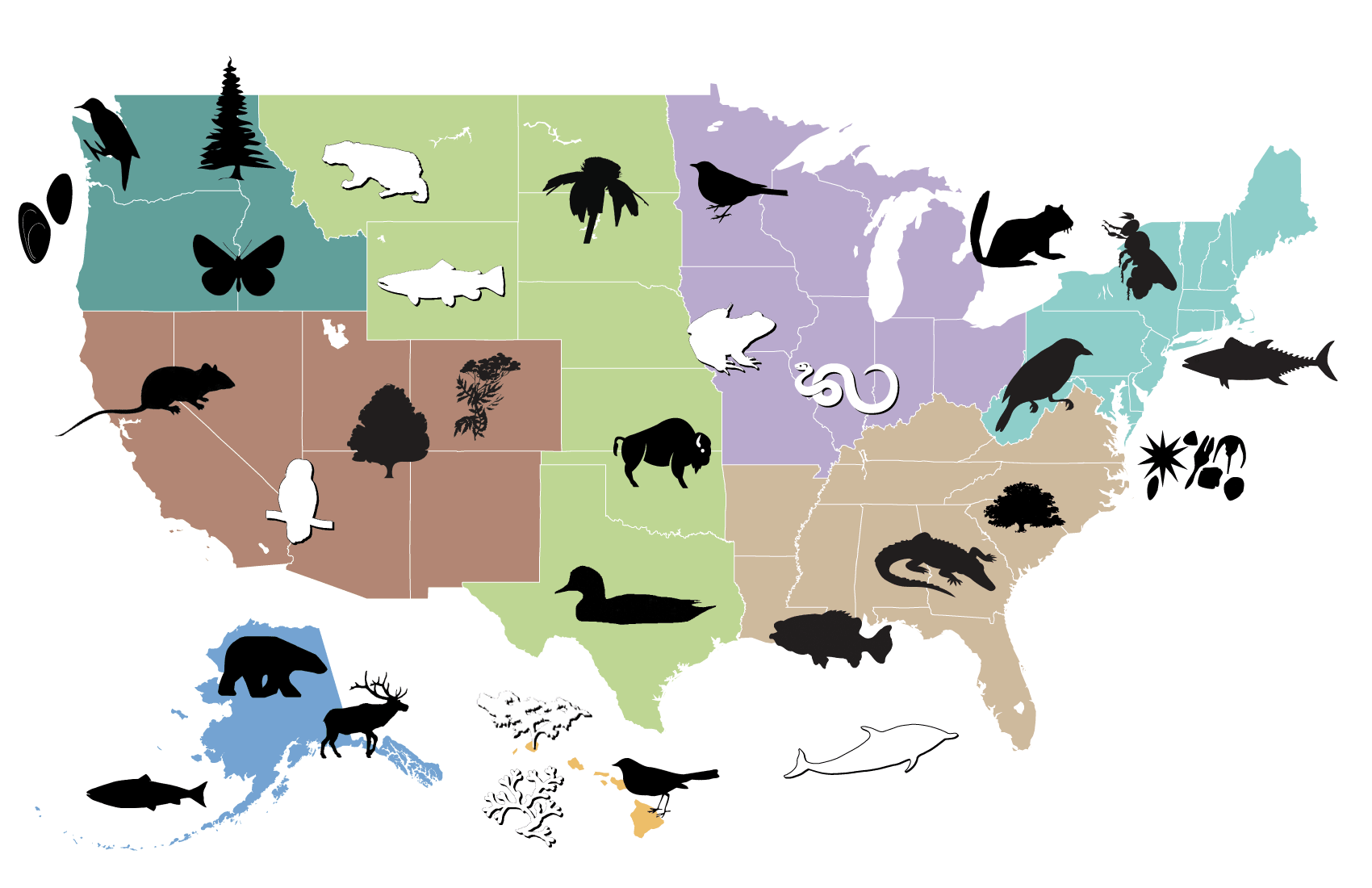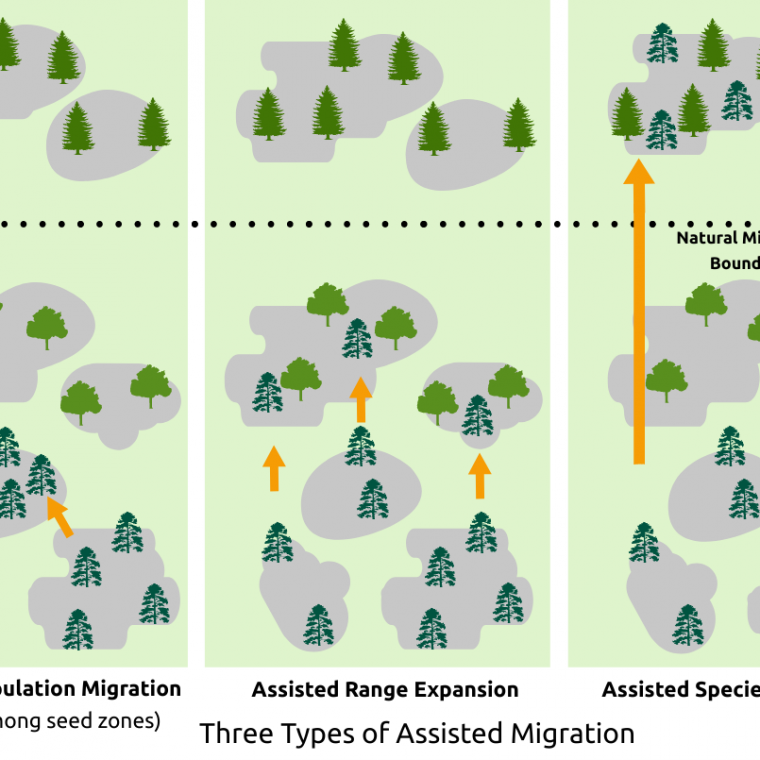Outdoor recreation is the most ubiquitous and popular activity that is supported by America’s public lands, and is an essential way that people interface with America’s natural and cultural heritage (White et al. 2016, Cutler et al. 2017). Federal lands are host to over 938 million recreational visits per year (White et al. 2016). Recreation is also an economic driver in its own right, supporting more than 6.1 billion jobs, and generating an estimated $646 billion in spending per year (White et al. 2016). Climate change will alter the opportunities and demand for outdoor recreation and the infrastructure that supports it in a number of ways. These include challenges to the sustainability and local feasibility of snow-based recreation given predicted changes in natural snowpack; opportunities for an expanded warm-weather recreation season given predicted increases in temperature; and evolving risks to recreationists themselves in the form of extreme weather events; the proliferation of disease-bearing insects and noxious plants; potential road, trail, and bridge failures; and the incidence of heat-induced and other climate-related illnesses.
Challenges and Opportunities
It can be reasonably assumed that recreationists will find ways to take advantage of new opportunities when and where they present themselves in the form of shorter winters, longer shoulder seasons, new technologies and equipment, new forms of communication, and even climate-related phenomena that become recreational destinations in their own right, such as glacial caves found within retreating glaciers. In order to remain relevant to the public they serve, land managers are challenged to be adaptive to shifting demands, demographics, and use trends. Other major challenges that recreation professionals currently face given future projections of climate change include:
- Climate-induced stress on roads, trails, facilities, campgrounds, and other infrastructure;
- Ecological damage (e.g. high-velocity run-off, erosion, or landslides) exacerbated by inadequate infrastructure that is unable to accommodate regional increases in precipitation and storm surges;
- Managing the demands of a longer shoulder season and higher numbers of visitors given staffing and budgetary constraints;
- Addressing an uncertain future for lower-elevation winter recreation destinations;
- Accommodating projected increases in water-based recreation while reservoir levels and baseline summer streamflows are concurrently projected to decrease; and
- Accounting for the health and safety of staff and visitors alike.
Options for adaptation can be organized along the continuum of resistance, resilience, and transition. Resistance generally comes in the form of taking action to ensure the persistence of a recreational site or opportunity given its dependence on the local context or character, or due to political or social factors. Examples include:
- Shoreline and riparian stabilization in the vicinity of vulnerable infrastructure, i.e. National Seashores, valley roads, or campgrounds in floodplains;
- Use of climate-resistant materials and designs, i.e. permeable pavement, elevated structures or boardwalks, or hardened road and trail surfacing;
- Use of technological innovations, such as high-efficiency snowmaking equipment at winter recreation areas or early warning systems to alert visitors to impending hazards; and
- Protective measures, such as fuelbreaks and defensible space around infrastructure in fire-prone areas.
Resilience generally comes in the form of adaptive actions that address risks and impacts and accommodate some degree of change. Examples include:
- Improve stormwater management systems on roads, trails, and infrastructure, i.e. bioretention features and other best management practices for surface water drainage and dispersement;
- Reinforce facilities and infrastructure to prevent or minimize impacts from extreme events, i.e. install bottomless arch culverts, improve existing bridges, or use stream-restoration techniques to dissipate stream energy associated with extreme precipitation events;
- Alter infrastructure and terrain (pitching trails away from prevailing direction of solar radiation, contouring to capture snowmelt and recycle it into snowmaking, creating snow caches, etc) to better capture and use natural snowfall at winter recreation areas, and offer snow-based options that are functional in lower-snow conditions;
- Be flexible in terms of staffing and access to account for shifting seasons of non-winter use and associated maintenance increases (Strauch et al. 2015, Ho et al. 2018); and
- Use communication tools that inform visitors of the reality of environmental change and align expectations with actual conditions (Buzinde et al. 2010).
Transition generally comes in the form of actions that anticipate and facilitate change. These actions could alter the form of infrastructure or the delivery of opportunities in a way that breaks from what could be considered conventional management. Examples include:
- Convert roads to trails where older roads are under-utilized and unsustainable;
- Decommission roads, trails, and campsites and remove culverts from areas vulnerable to climate-induced risks;
- Relocate existing infrastructure and opportunities to areas with less risk of climate-induced damage;
- Focus on four-season and non-skiing recreation at winter sports areas;
- Encourage alternative means of access , i.e. shuttle buses, ferry services, guided services, or reservation systems; and
- Plan for impermanence with temporary structures that can be relocated when necessary, i.e. open-air shelters or tents that can be packed down, portable piers, floating docks, etc. (Beavers et al. 2016).
O’Toole, D. 2018. Recreation lands in a changing climate. USDA Forest Service Climate Change Resource Center. https://www.fs.usda.gov/ccrc/topics/recreation





